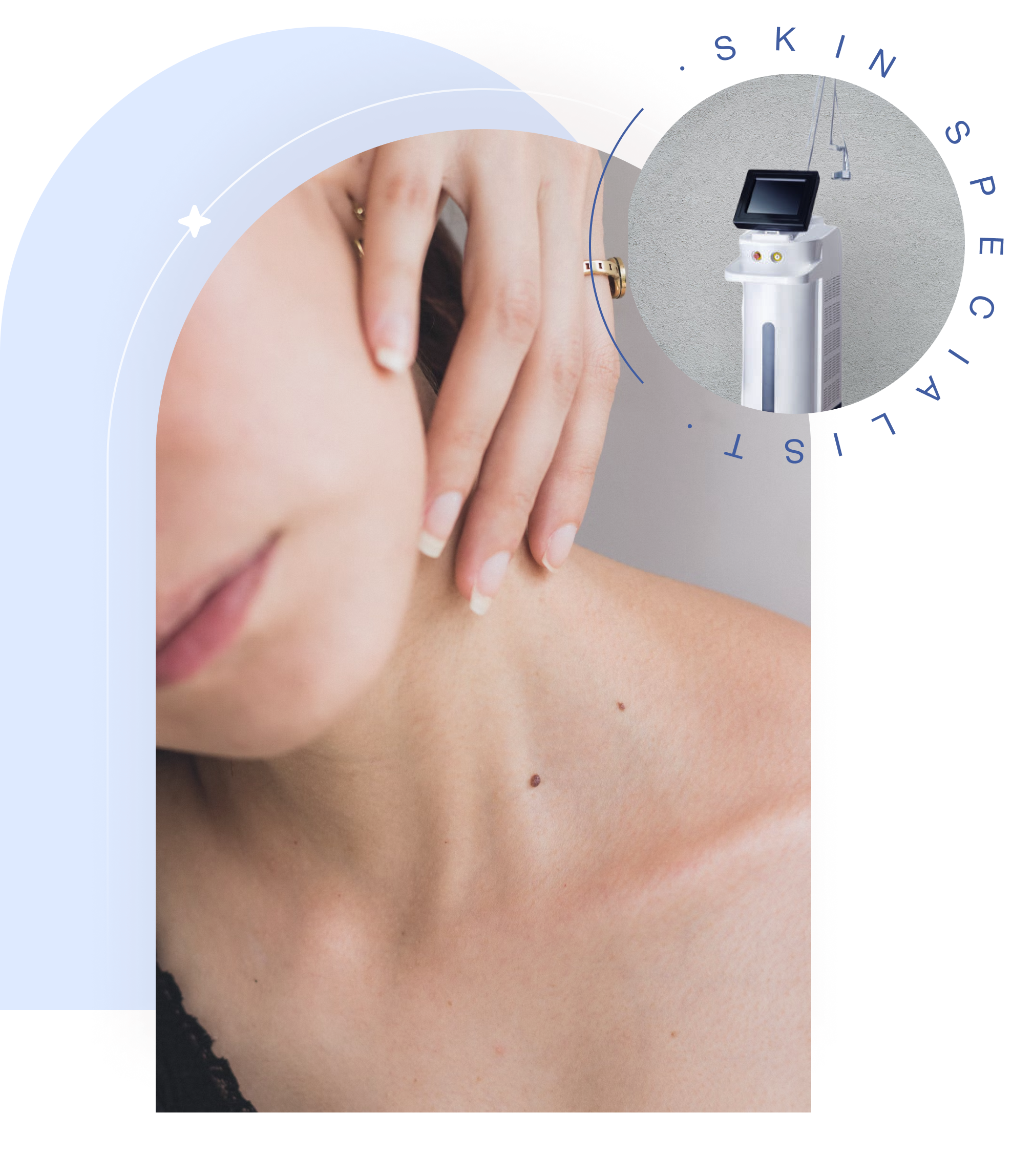Vascular lesions are visible changes in blood vessels that appear on the skin, often showing up as red, purple, or blue marks. They’re usually caused by dilated, damaged, or abnormal vessels. While generally harmless, they can be bothersome for cosmetic reasons and occasionally signal an underlying issue. They most commonly affect areas like the face, neck, and legs.
What vascular lesions do we treat?
Telangiectasia: Fine, dilated vessels often on the face or legs
Spider angiomas: Central red spot with radiating vessels
Port-wine stains: Flat, reddish-purple patches due to malformed capillaries, present at birth
Cherry angiomas: Small, bright red benign vascular papules
Hemangiomas: Benign vascular proliferations, common in infancy
Venous lakes: Soft, compressible blue lesions, often on sun-exposed skin
Contributing Factors to Vascular Lesions

(Available on Excel V and Excel V Plus)
Best for
Mild cases or isolated vessels.
How It Works
The long-pulse Nd:YAG laser emits energy at a wavelength absorbed by haemoglobin in blood vessels. This heat causes the targeted vessels to collapse, effectively treating both surface red veins and deeper blue veins.
Results
Treated vessels may disappear immediately or gradually fade over several weeks.
(Candela VBeam Perfecta, Excel V, Excel V Plus, Sciton BBL)
Best for
More severe cases or large areas of visible facial veins and redness, particularly in rosacea.
How It Works
This approach layers multiple vascular-targeting technologies in one session, including:
Results
Effectively reduces visible veins, diffuse redness, and facial flushing commonly seen in rosacea.
(Candela VBeam Perfecta, Excel V, Excel V Plus, Sciton BBL)
Best for
Stimulating collagen and vascular remodelling to reduce persistent skin redness.
How It Works
Often recommended in combination with vascular laser or BBL treatments to enhance skin healing, texture, and redness reduction.

Most vascular lesions are benign and don’t pose a medical risk. However, they may cause cosmetic concern or, in rare cases, indicate an underlying condition.

Vascular lesions can result from genetics, sun exposure, aging, hormonal changes, or underlying conditions like rosacea. They may also appear after skin trauma or during pregnancy.

Yes, treated vessels are permanently removed, but new ones can form over time. Maintenance treatments may be recommended, especially if triggers like sun exposure persist.

Laser and light-based treatments such as Pulse Dye Laser (VBeam), Long-Pulse Nd:YAG, and Broad-Based Light (BBL) are commonly used. These target the vessels while leaving surrounding skin intact.

The face, neck, chest, and legs are most commonly affected due to sun exposure and thin skin in these areas.